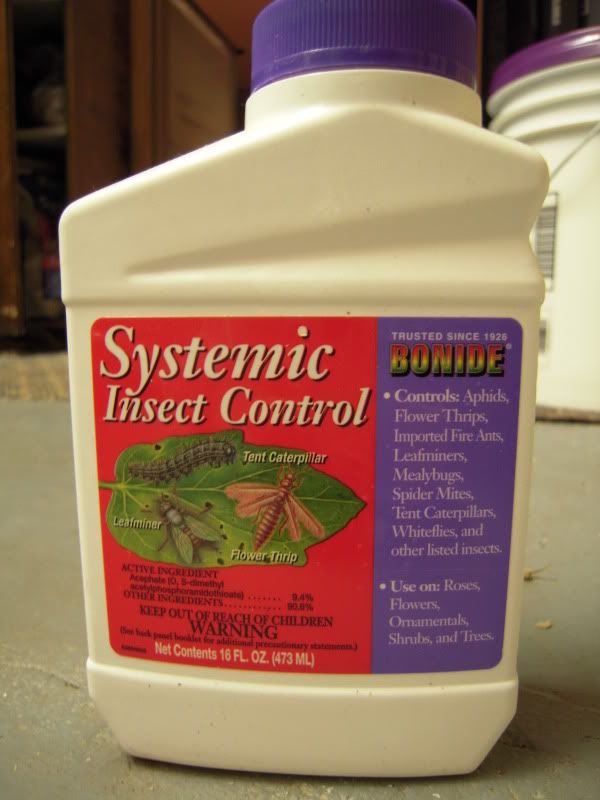smartie2000
Well-Known Member
Yup, I think I can declare my war over with mealie bugs. I haven't seen any for weeks.:clap:
My solution was Acephate (also known as Orthene) found in Bonide Systematic Insect Control. I followed the bottles directions and applied it using as a spray. I think it is aborbed into the leaves of the plant and the bugs die went they suck the poison.

I hate the stuff, it smells like crap. It is a neurotoxin, and I do get a tingling feeling when I touch it. But it worked. Make sure that you don't inhale the spray and wear rubber gloves. Try to use a well ventilated area.
I think that I did three sprays. I hope that I won't need to spray again. I don't want to create more resistant bugs, before I run out of stuff to use!
I've also tried Merit (Imidacloprid), which is also a systematic. And my mealie bugs were resitant to them. However, Merit did work to kill all the scale in my isolated grocery store phals. Merit was expensive to buy too. I thought that it would work, but I had a mutated strain of the bug. Merit has worked for other people
Merit has worked for other people
I've also tried Safer's End All , which contains pyrethrins. This product is a contact poison, so it must touch the bugs. It is a safe product to use, but it didn't work on my mealies. Maybe because some were hiding in the medium or maybe they were also resistant. I am not sure.
Rubbing alcohol does kill the bugs immediately, but only if you can find them all!
My solution was Acephate (also known as Orthene) found in Bonide Systematic Insect Control. I followed the bottles directions and applied it using as a spray. I think it is aborbed into the leaves of the plant and the bugs die went they suck the poison.

I hate the stuff, it smells like crap. It is a neurotoxin, and I do get a tingling feeling when I touch it. But it worked. Make sure that you don't inhale the spray and wear rubber gloves. Try to use a well ventilated area.
I think that I did three sprays. I hope that I won't need to spray again. I don't want to create more resistant bugs, before I run out of stuff to use!
I've also tried Merit (Imidacloprid), which is also a systematic. And my mealie bugs were resitant to them. However, Merit did work to kill all the scale in my isolated grocery store phals. Merit was expensive to buy too. I thought that it would work, but I had a mutated strain of the bug.
I've also tried Safer's End All , which contains pyrethrins. This product is a contact poison, so it must touch the bugs. It is a safe product to use, but it didn't work on my mealies. Maybe because some were hiding in the medium or maybe they were also resistant. I am not sure.
Rubbing alcohol does kill the bugs immediately, but only if you can find them all!











































